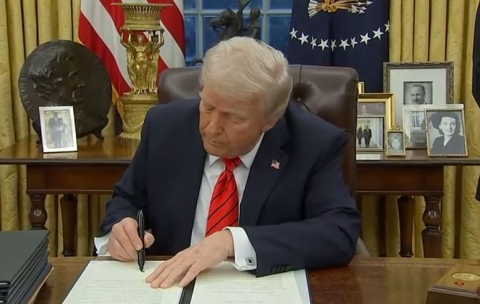


In an update to its “World Economic Outlook,” the International Monetary Fund (IMF) improved its forecast for U.S. economic growth – and credited the passage of President Donald Trump’s One Big Beautiful Bill Act (OBBBA) in the process.
Released Tuesday, the IMF’s “World Economic Outlook Update” revises the forecasts presented in its World Economic Outlook (WEO) published three months earlier, in April.
The new WEO raises its forecasts for U.S. economic growth by 0.1 percentage point for 2025 and by 0.3 point for 2026:
“In the United States, with tariff rates settling at lower levels than those announced on April 2 and looser financial conditions, the economy is projected to expand at a rate of 1.9 percent in 2025. This is 0.1 percentage point higher than the April reference forecast, with some offset from private demand cooling faster than expected and weaker immigration.
“Growth is projected to pick up slightly to 2.0 percent in 2026, with a near-term boost from the OBBBA kicking in primarily through tax incentives for corporate investment. This is 0.3 percentage point higher than the April reference forecast.”
What’s more, the One Big Beautiful Bill is forecast to boost U.S. economic growth to a level higher than it would otherwise reach over the next five years, according to the IMF’s latest outlook report:
“The IMF staff estimates that the OBBBA could raise US output by about 0.5 percent on average over the WEO horizon through 2030, relative to a baseline without this fiscal package.”
Published the day before Wednesday’s news that U.S. Gross Domestic Product (GDP) increased at a 3.0% annualized rate during this year’s second quarter, the IMF’s updated forecast cites the first quarter’s 0.5% decline as a factor in its calculations.
